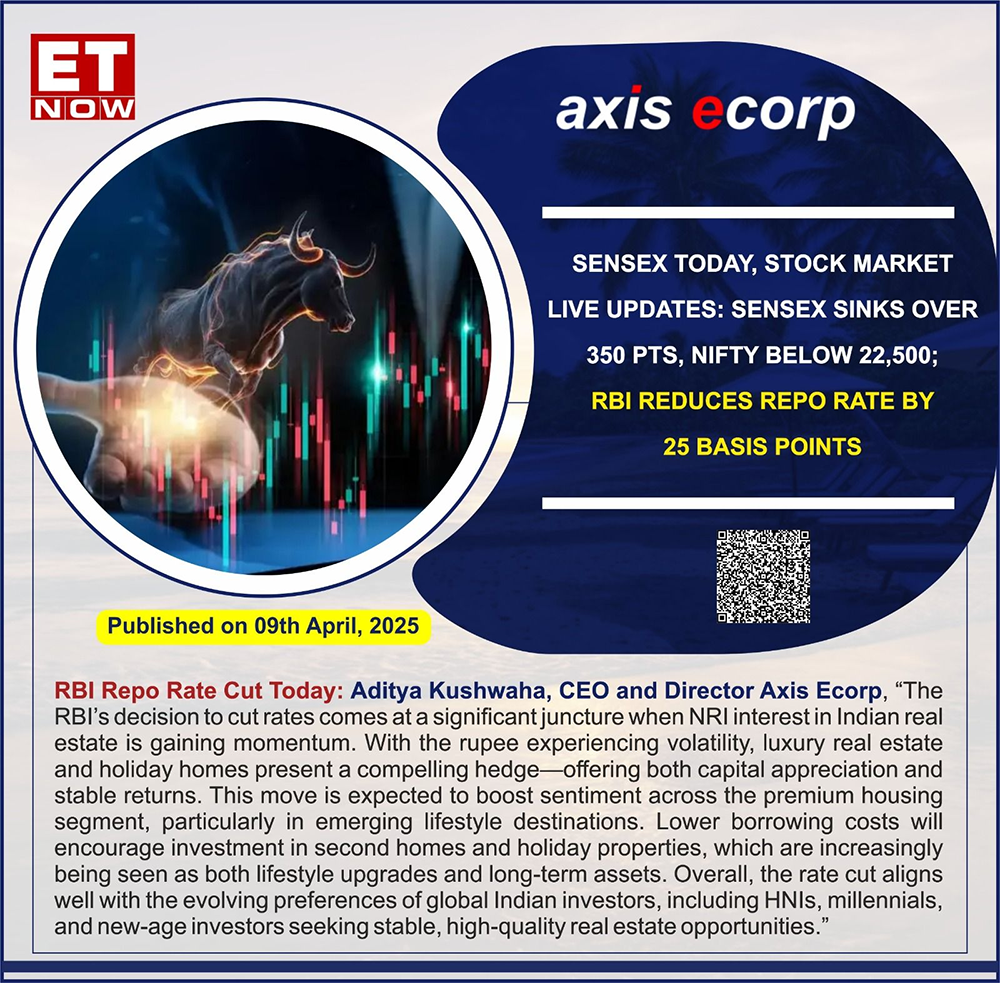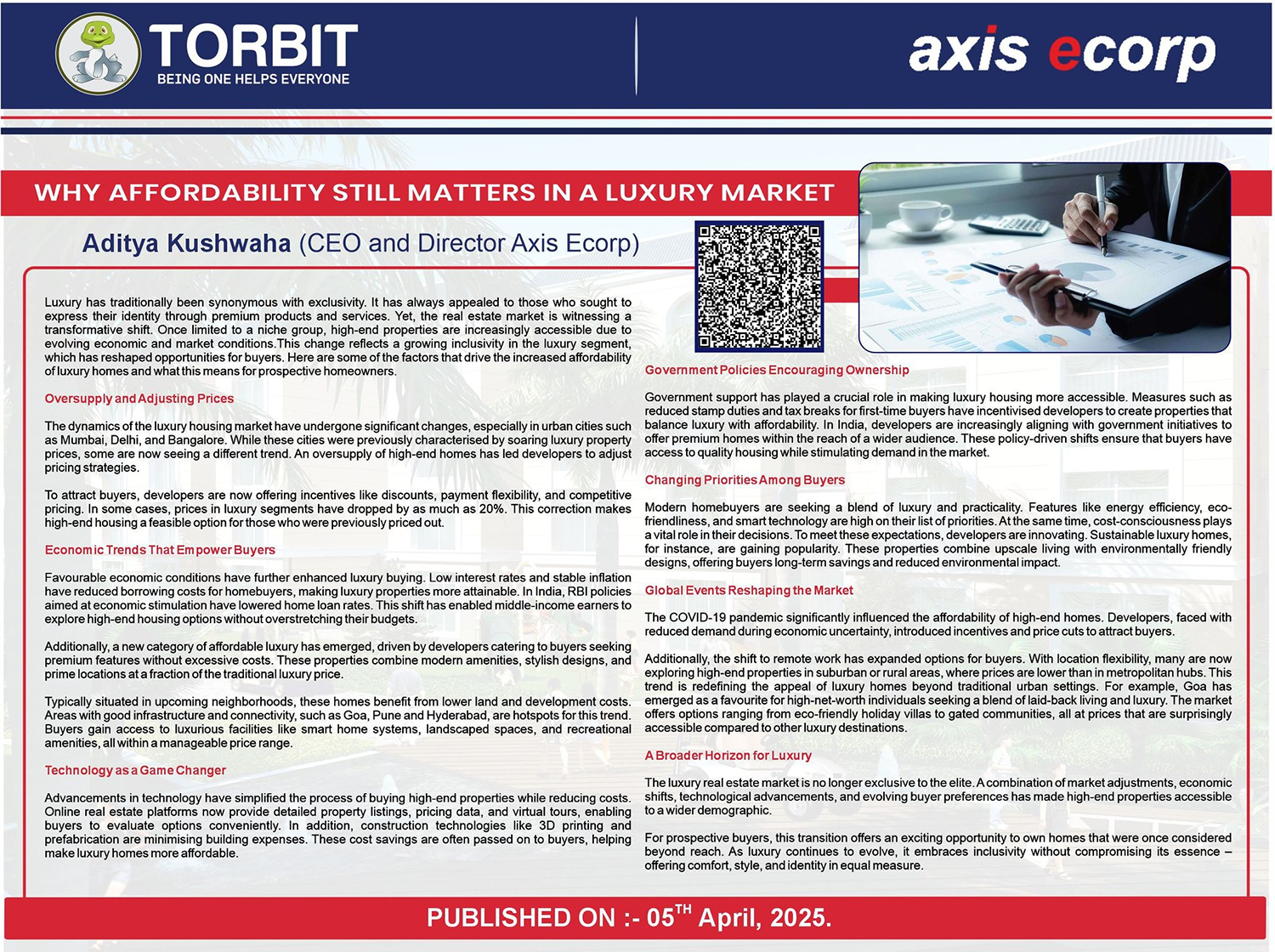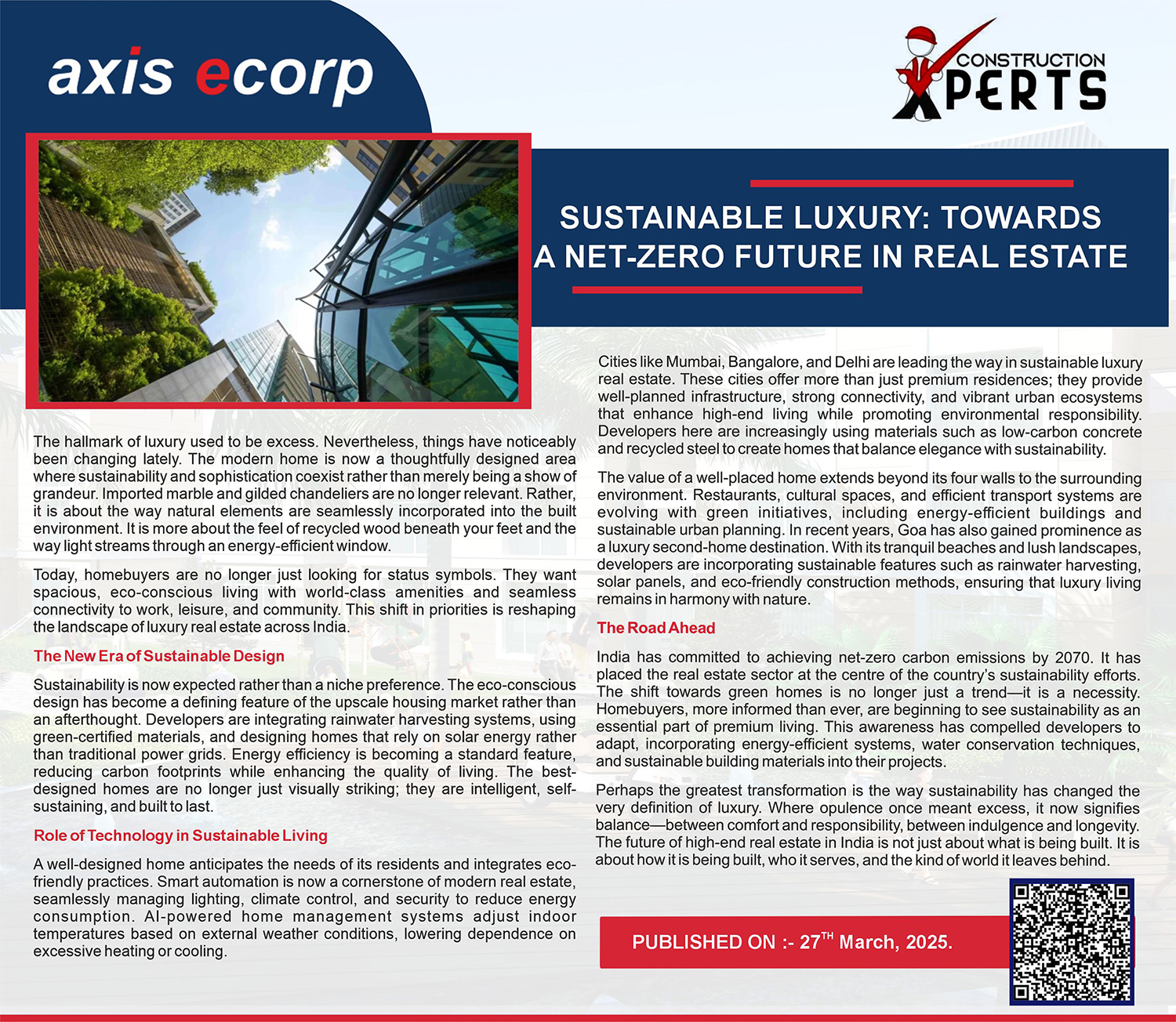First-time buyers drive market shift

Mid-range and premium homes dominate demand as homebuyers prioritise
amenities, connectivity and long-term value.
Real estate demand is surging among rst-time buyers and investors, shifting toward midrange and premium homes with modern amenities. Standalone buildings are losing appeal as
developers adapt. A KPMG India report shows mid-range and premium housing rose to 16%
of sales in 2024 from 6% in 2019. Anshuman Magazine, chairman & CEO - India, South-east
Asia, Middle East & Africa, CBRE, updates that homes priced `45 lakh – `1 crore remain the
top choice in metro and tier-i cities due to better affordability, nancing, and narrowing gaps
between rent and EMIS.
Arvind Nandan, MD, research and consulting, Savills India, highlights that homes above `1
crore accounted for 40% of 2024 sales, with $629 mn. (`52 bn.) in PE investments, capturing a
15% share. Domnic Romell, president, CREDAI-MCHI, adds that rst-time buyers favour wellconnected suburbs, while investors focus on rental-yielding assets in prime areas.
Shapoorji Pallonji Real Estate
“We ensure buyers across segments access high-quality homes that match their lifestyle.”
______________________ Sriram mahadevan CEO, SPRE & MD, Joyville Shapoorji Housing
(SPRE) caters to evolving demand with projects from Joyville in the mid-income segment to
premium developments like Vanaha, BKC 9 and BKC 28. “We ensure buyers across segments
access high-quality homes that match their lifestyle,” asserts Sriram Mahadevan, CEO, SPRE
& MD, Joyville Shapoorji Housing.
Prestige Group is seeing strong demand for mid-segment and premium homes, especially in
the `2-4 crore range. Praveer Shrivastava, sr. executive VP, residential, Prestige Group,
apprises that over 30% of buyers in this segment are upgrading from rentals, reecting
evolving preferences for quality and comfort.
Century Real Estate reports record sales and strong luxury demand. “In our Indiranagar,
Bengaluru project,
prime golf-facing units are seeing multiple buyers competing and paying premiums for preferential allotment,” avers Maninder Chhabra, director – sales, marketing & CRM, Century
Real Estate.
While luxury segment grows, affordable housing also continues to be a major catalyst in
well-connected areas. “Peripheral metro markets are emerging as investment hubs, driven by better infrastructure and affordability, propelled by urbanisation and government initiatives
like PMAY,” says Sarveshaa SB, CMD, Bhadra Group.
Noida and its surroundings lead the NCR’S real estate growth, driven by affordability, infrastructure and economic decentralisation. “With rising infrastructure and industry expansion,
the NCR is shifting from a peripheral to a key growth hub,” says Deepak Kapoor, director,
Gulshan Group.
Mohit Goel, MD, Omaxe Ltd, puts in that in 2024, housing sales in the top 15 tier II cities grew
by 4%, while sales value jumped 20%, reecting strong price appreciation. Firsttime buyers
now prioritise quality, connectivity and growth potential.
Aditya Kushwaha, CEO and director, Axis Ecorp highlights that the fractional ownership
model is making luxury real estate more accessible, driving demand in prime destinations
like Goa, Manali, and Lonavala.
Plotted developments are seeing unprecedented demand, especially among rst-time
investors drawn to their high appreciation potential. A Magicbricks survey of 2,200 homebuyers found 58% preferred plots, followed by commercial spaces (17.1%).
As per the survey, in Q4 2024, Bengaluru led plot demand (36.5%), followed by Chennai
(11.0%) and Lucknow (8.9%). Lucknow saw the highest preference, with 42.66% of buyers
choosing plots over other properties. “In tier 2 and 3 cities, rst-time buyers and investors
favour residential plots over apartments,” expresses Kamal Manchanda, founder, Brand Reality Investors Group.
India’s commercial real estate is booming, driven by strong investor demand and high rental
yields. “Individuals and institutions dominate, with professionals investing for stable, lucrative returns,” says Gaurav Mavi, co-founder, BOP.IN.
So, we can conclude that residential segments continue to generate lot of interest from rst
time buyers and investors across the country.






